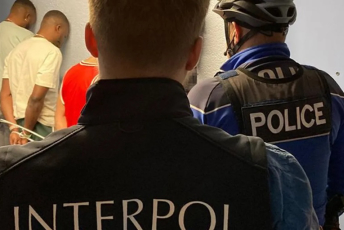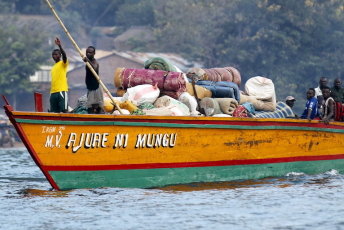Research has found widespread and problematic use of heroin in South Africa’s small towns, big cities and rural areas. The illicit trade in the opioid drug may have an annual cash turnover of billions of rands. But the rapid emergence of this thriving industry and its national importance have been largely ignored or misunderstood by police and government.
The new study by the ENACT project is based on fieldwork in South African communities, including interviews with gang members, drug dealers, heroin users, health workers and police. ENACT is an EU-funded initiative that builds knowledge and skills to enhance Africa’s response to transnational organised crime.
The research found that heroin has become a key commodity underpinning the criminal economy in South Africa. The trade has a severe corrupting effect on police, who have interdependent relationships with gangs, drug dealers and users. The problem is exacerbated by poor or sometimes complicit policing, limited crime intelligence, and the failure of the state to provide social care or adequate education and health services.
|
Combatting SA's booming heroin trade
©ENACT/Institute for Security Studies |
Data on drug use is limited, and measuring heroin use is made more complicated by different regional names for drug combinations which include heroin, among them nyaope, sugars and unga. Nevertheless, it is likely that the 2015 figure of 75 000 people injecting heroin and 110 000 smoking the drug has grown significantly. This puts South Africa at risk of following drug patterns in sub-Saharan Africa, which is expected to have 20 million users of hard drugs by 2040.
The growth of the heroin market in South Africa has been compounded by poor policy, with severe social, economic and political implications. Government needs to recognise that it faces a heroin crisis that is taking a heavy toll on communities. In major urban areas, people are subject to extreme violence as local gangs compete for control of drug markets.
Heroin creates high dependency, with a reliable income stream from repeat customers. South Africa’s heroin economy is a spinoff from the growing international drug smuggling route down the East Coast of Africa for shipment to international markets in Europe and the US. This follows an increase in heroin production in Afghanistan, better enforcement on other routes, and persistent impunity for African drug traffickers in countries like Mozambique, Tanzania and Kenya.
Tanzanian networks have played a pivotal role in developing the South African heroin market. They make wholesale deliveries of the drug to South African gangs in Cape Town and Nelson Mandela Bay, and distribute it to a network of dealers in Johannesburg and Tshwane.
The Tanzanian dealers appear to have eclipsed Nigerian networks as the primary suppliers of heroin, and may have developed connections to Pakistani merchants who source the product from Afghanistan. The nature of these networks and their interconnections, as well as the kingpin figures who make the bulk of the profits, are not yet clear.
Heroin is not the only drug that feeds these markets, but it is a hugely important one. In Cape Town – a city which is an important vector for nationwide drug use – heroin may now rival crystal meth as a mainstay of the drug trade.
The cash-based nature of the drug business is a lubricant for low level police corruption. In Cape Town, dealers in gang-controlled neighbourhoods told ENACT researchers that police visit their selling points for small cash bribes. Interviewees in Tshwane spoke of corrupt junior police confiscating drugs and selling them to other dealers.
Heroin is highly addictive and injecting it raises the risk of HIV infection and transmission of Hepatitis C. Drug users in South Africa generally have poor access to services, as a result of neglect, marginalisation and deliberate policies. Because they are criminalised, people who are dependent on heroin become socially marginalised and many end up living on the street, where they face assault and extortion by police.
Responding to the illegal drug trade falls to authorities who are under-prepared and under-resourced. Interventions need to encompass both law enforcement and political strategies. Police investigations should be intelligence led and focused on organised crime networks, secretive high-level facilitators of the trade (including money launderers), and the traffickers that reap the bulk of the profits. Political leaders in Southern Africa need to tackle the corruption that facilitates the heroin transit route through neighbouring countries.
The criminal justice response must also be aligned with the harm-reduction ambitions of South Africa’s drug policy. And a national approach is needed that reaches into communities on the ground. Heroin use is driven by living in economically depressed and socially fractured neighbourhoods where anxiety, depression and physical pain are features of daily life. Government’s failure to provide social care and health services to communities where drug use is prevalent has allowed the heroin market to grow.
Responses must therefore go beyond law enforcement to include public health and social development strategies. Despite commitments to harm reduction in government’s drugs master plan, the strategy is not based on evidence or international best practice. Provision of less harmful substitutes to heroin, and needle and syringe exchange programmes, are successful and accepted internationally, but only Tshwane currently has these programmes.
In the short term, rather than criminalising users and trying to cut off supply, a more effective community-level response would be to provide health services, including access to regulated substances for users. Social programmes that reduce the vulnerability of communities to problematic drug use and gang recruitment are also needed.
Simone Haysom, Senior Analyst, Global Initiative against Transnational Organised Crime
ENACT is funded by the European Union (EU). The contents of this article are the sole responsibility of the author and can under no circumstances be regarded as reflecting the position of the EU.







